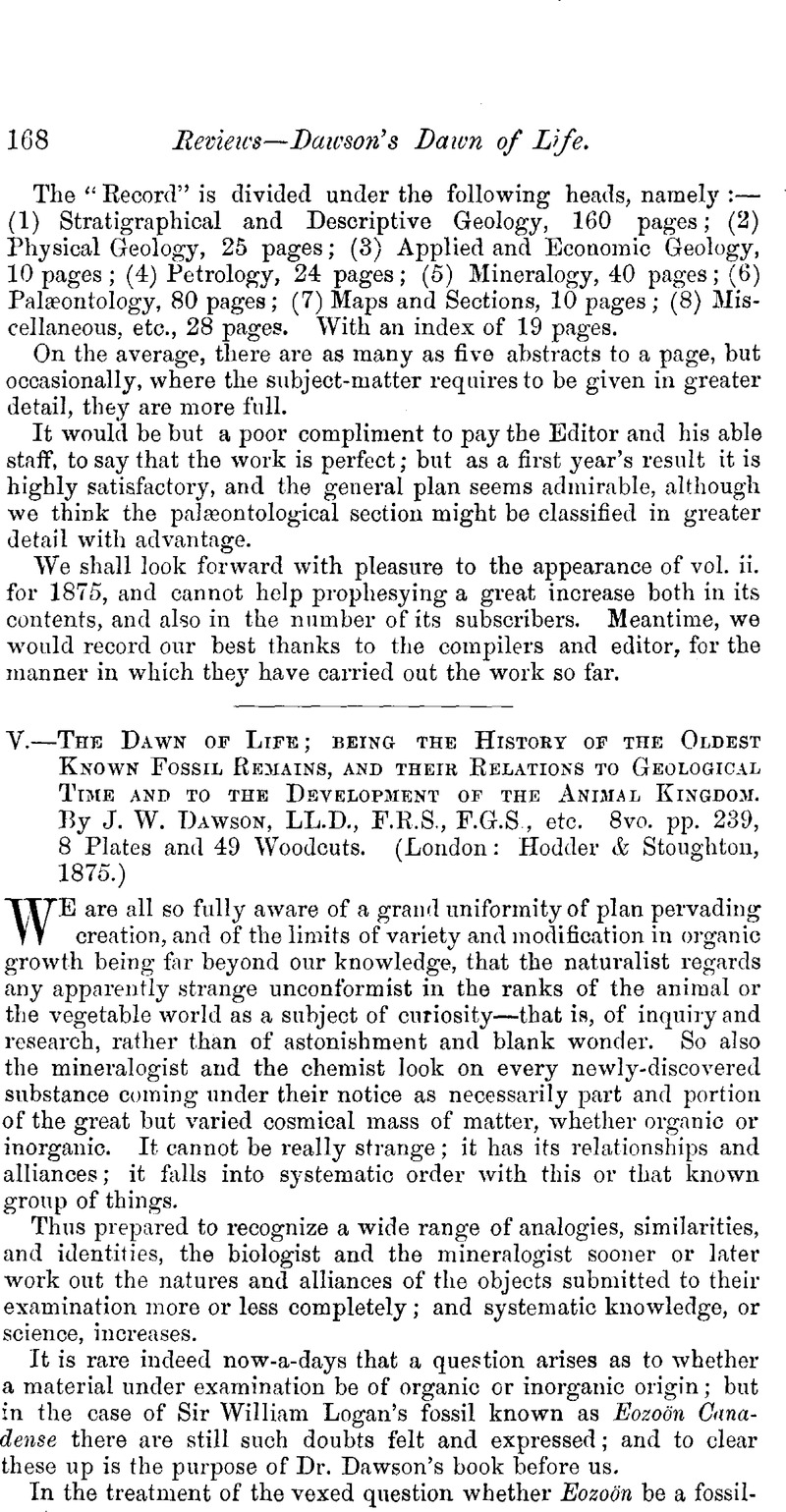No CrossRef data available.
Published online by Cambridge University Press: 01 May 2009

page 169 note 1 White pyroxene, pale grey serpentine, loganite (a dark green alumino-magnesian silicate, allied to chlorite and pyrosclerite in composition, but differing in structure), pyrallolite and rensselorite.
page 170 note 1 Some very curious minute imitative forms presented by coke are figured and described in the Phil. Mag. for January, 1876, by Mr. E. T. Newton, F.G.S. We might be disposed at first sight to set them in rivalry to some of the Eozoic structures; but the encrinitoid, zoophytoid, plumoid, and other forms of the coke do not reach such an exact state of similitude, much less do they all so definitely represent parts of one structure, as to support the idea of their being analogues of the particular serpentinous Eozoönal bodies above referred to.
page 171 note 1 Hydrous alumino-magnesian silicates.
page 171 note 2 Phil. Trans. 1859, pi. 4, fig. 5; and Ann. Nat. Hist., ser. 2, vol. x. pi. 4, fig. 5Google Scholar
page 171 note 3 Abhandl. K. bayer. Akad. Wiss. Clas. ii. vol. xii.
page 171 note 4 K., Vet.Ak., Handl., vol. ix. No. 6, 1870.Google Scholar
page 172 note 1 The removal of “Bathybius” from the ranks of a living organism does not affect the stability of Eozoön as a recognizable creature, for even if the said protoplasm pervaded the sea-bed, yet Eozoön would be remote from so low and simple an organism, being a Nummuline or highly differentiated Foraminifer. See Dr. Wallich's remarks on Bathybius, “Monthly Microscop. Journ.,” January, 1868, p. 39.